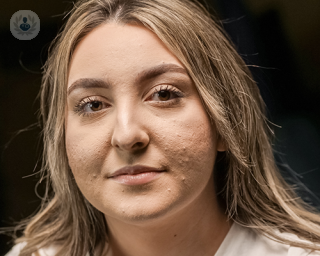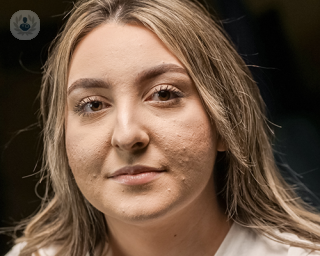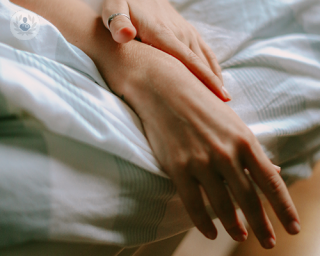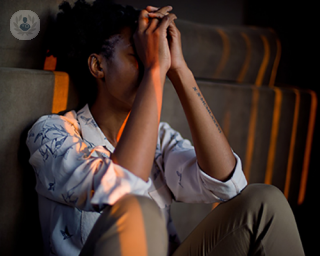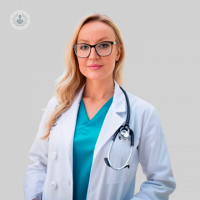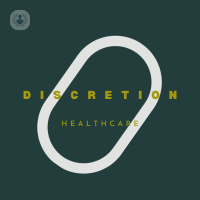Skin diseases
Dr Ravi Ratnavel - Dermatology
Created on: 11-13-2012
Updated on: 06-05-2023
Edited by: Conor Dunworth
What are skin diseases?
Skin diseases are a broad range of conditions affecting the skin, and include diseases caused by bacterial infections, viral infections, fungal infections, allergic reactions, skin cancers, and parasites.
What are the different types of skin disease?
There are many different kinds of skin disease, most of which are completely unrelated save for the fact that they affect the skin. Skin diseases can be categorised as either being caused by infection (bacterial, viral, or fungal), allergies, autoimmune reactions, parasites, or cancers. Some common types of skin disease are:
Bacterial infections:
- Cellulitis – common infection caused by bacteria entering a break in the skin. It causes swelling, pain and redness. If it is not treated, cellulitis can be very serious, especially if it infects the eye. Mild cellulitis on a small area of skin can usually be successfully treated with antibiotics.
- Impetigo – highly infectious and itchy, it tends to manifest as red sores. It is more commonly seen in children and babies than adults. It can appear anywhere on the body, but is more common around the nose and mouth. Topical treatments, as well as oral antibiotics are used to treat impetigo.
- Boils and carbunkles – infections of hair follicles or oil glands that develop as a sore lump over a few days, eventually filling with pus. A carbunkle is a painful concentration of boils linked to each other beneath the skin. If these boils/carbunkles become very large and painful, your doctor may need to drain it. Antibiotics may be prescribed if the patient suffers from reccurent infections, or if they are particularily severe.
- Staph infection – caused by Staphylococcus entering and infecting a cut in the skin. Varies in severity from simple boils to flesh-eating infections. Depending on the severity, antibiotics may be prescribed to help clear up the infection, but these often go away on their own.
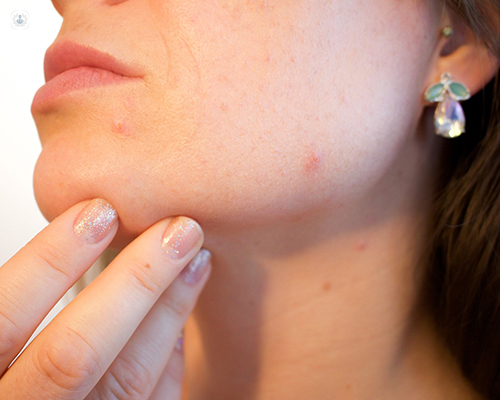
Viral infections:
- Warts – generally harmless lumps caused by a virus that usually clear up without treatment, but take a long time to do so. There are also a number of treatments available, including freezing them, acid treatments, laser treatments or peeling medicine.
- Verrucas – A type of wart that commonly appears on the foot (plantar wart). They sometimes have a black dot in the middle of them, and can cause a lot of pain when walking. Most verrucas go away on their own, but if they are painful you may want to remove them. There are a number of different gels, ointments and creams available to treat verrucas. They can also be frozen.
- Cold sores/herpes – caused by the herpes simplex virus, these wart-like sores usually appear on the mouth or genitals. They are very contagious, so you should avoid kissing people or having sex until the sore has completely healed. This usually takes about 10 days, but there are also antiviral medications and ointments available to treat them.
- Chickenpox – a common infectious disease known for the red, itchy spots it causes. It is most common among children, but can affect people of any age. It can also cause fever or aches and pains. They are very contagious and your child must stay home from school if they have chicken pox. It usually takes 2 weeks for chicken pox to heal. A number of topical treatments can help ease symptoms.
- Shingles – a reactivation of the dormant chickenpox virus, shingles causes clusters of painful blisters. It only occurs in people who have already had chickenpox. It can take up to a month for a shingles rash to heal. Paracetamol or other painkillers can be taken to help ease the painful symptoms.
Fungal infections:
- Ringworm, including athlete’s foot. Not a worm, as it’s name suggests, it usually appears as a red, scaly patch that itches. It may appear in a ring or bump. It can be treated by antifungal creams or powders.
- Yeast infection (candidiasis) – caused by the candida fungus, which naturally appears in small amounts on the body. Infections occur when the yeast builds up and grows out of control. Infections in the mouth and throat are called thrush. Yeast infections can be treated with antifungal creams, powders or medication.
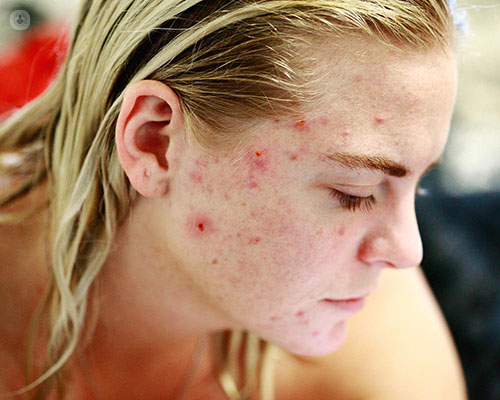
Allergic reactions:
- Eczema (allergic dermatitis) - most types of eczema are not allergies, however, atopic eczema does occur in people who are sensitive to allergens. It causes the skin to become red, dry, cracked and sore. Avoiding triggers can hellp lessen atopic eczema episodes, Topical corticosteroids are also often used to lessen symptoms. Keeping th eskin moisturised can also help.
- Hives (urticaria) – a raised, itchy rash. Can be causes by allergies, and also by insect bites, nettle stings, etc. It can also be triggered by stress, hot weather, caffeine or alcohol. Hives usually go away on their own within a few days, but steroids may be prescribed if it is a severe case. Antihistamines can help ease the itching.
Autoimmune diseases:
- Psoriasis – characterised by flaky, red patches of skin, this chronic condition is thought to be caused by the immune system attacking skin cells. It can run in families. There are a number of different topical treatments available to help ease the symptoms.
- Eczema (atopic dermatitis)
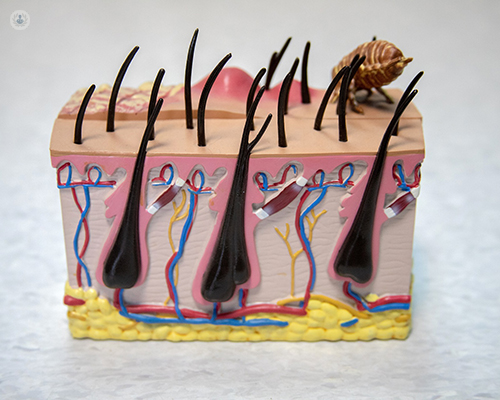
Parasites:
- Scabies – an infestation of mites that burrow into the skin and lay eggs, causing a rash and intense itching. Scabies are usually spread through sexual or prolonged skin-to-skin contact. In rare situations, it can be spread by sharing bedding, towels or clothes. There are a number of creams and lotions used to treat scabies.
- Bedbugs – tiny parasitic insects that suck human blood, preferring warm environments, such as beds. You may notice spots of blood on your sheets. In order to get rid of bed bugs, a pest control service should be contacted. A pharmacist can also give you topical treatments for the bites.
- Headlice – tiny, wingless insects that live in the hair, drinking blood from the scalp. They are commonly found on the hair of children, with schools frequently experiencing outbreaks. Their eggs (nits) are often found attached to the hairs of the patient. Treatments usually include a lotion or shampoo that kills the eggs and lice.
- Mites – tiny arachnids related to ticks. There are several types that feed on humans, including scabies (see above).
Skin cancer:
Which type of specialist treats skin diseases?
Dermatologists specialise in treating skin diseases, while other specialists may be needed to treat certain conditions, such as skin cancer.

